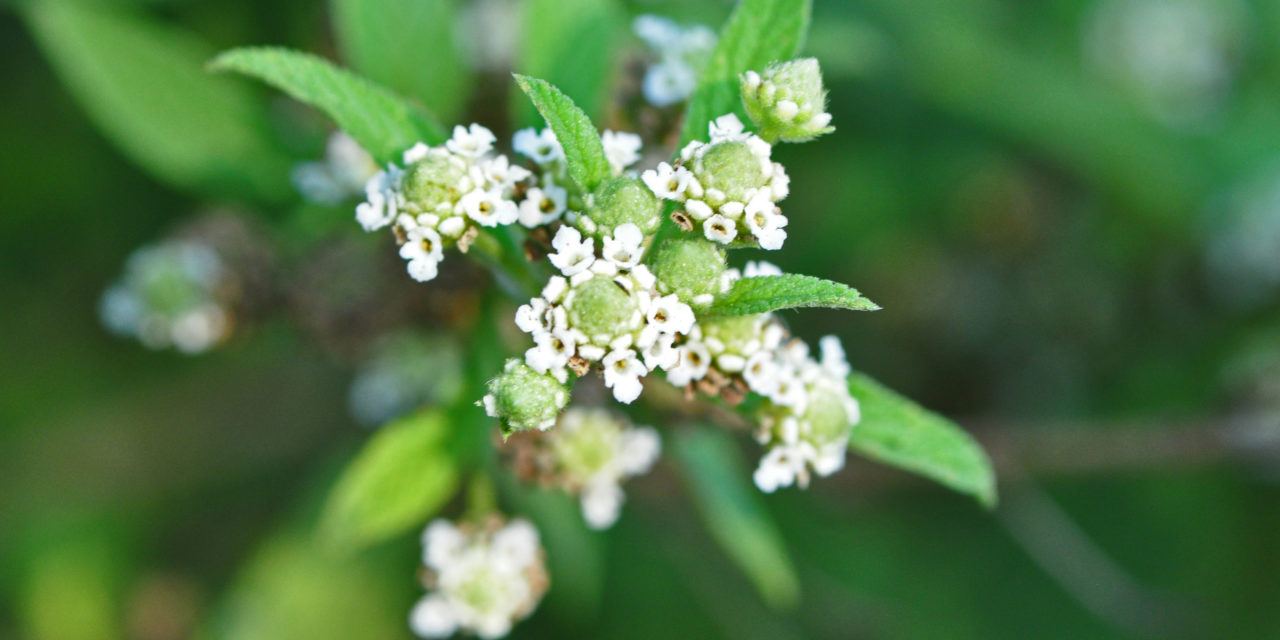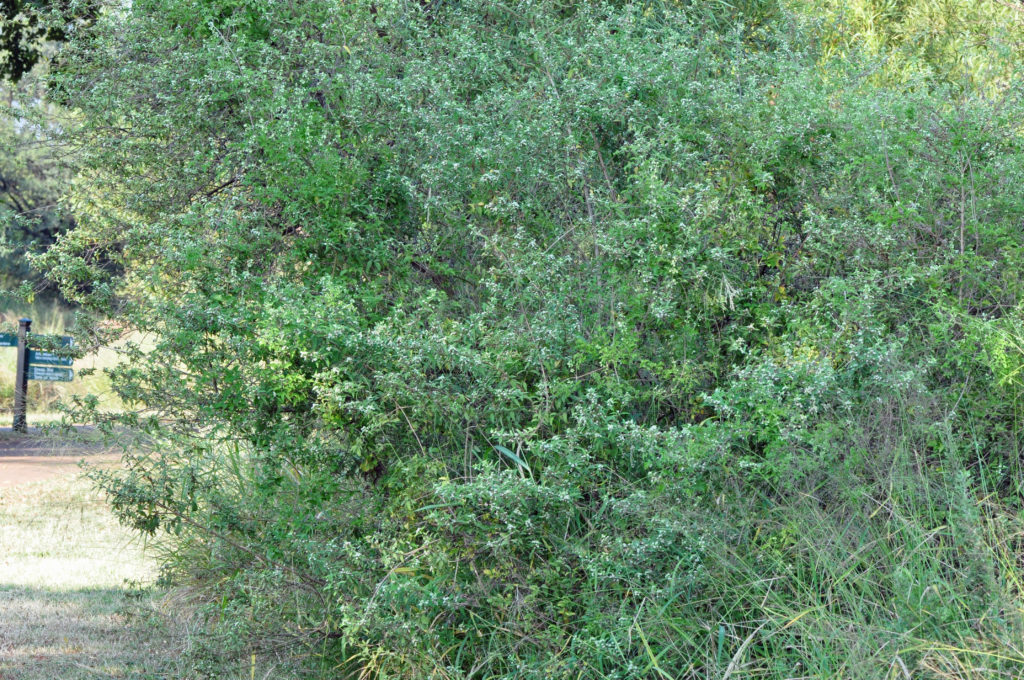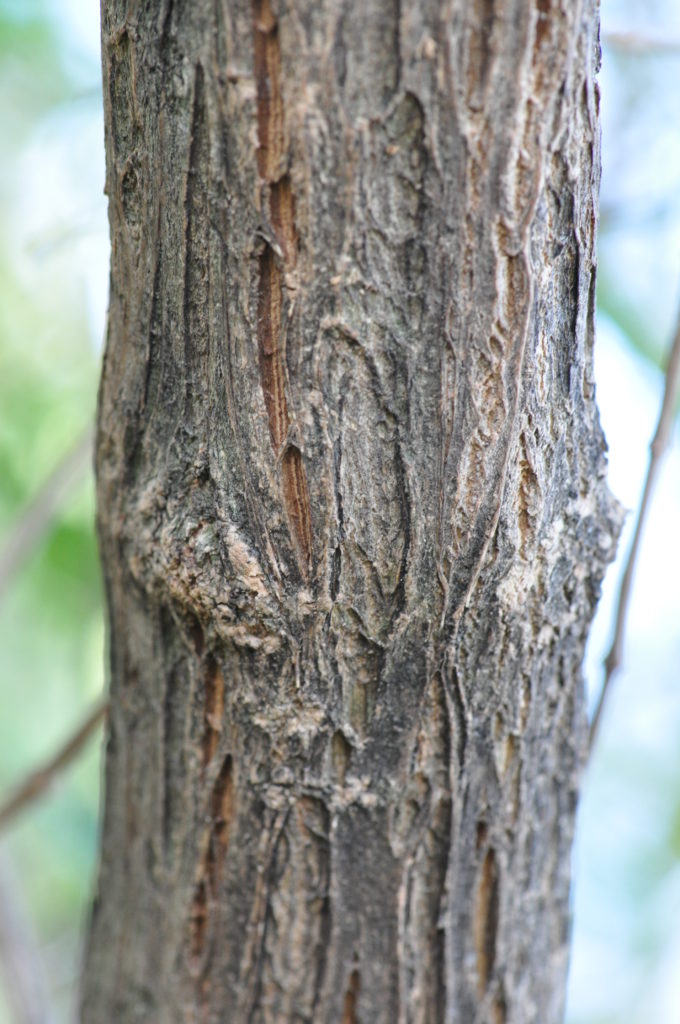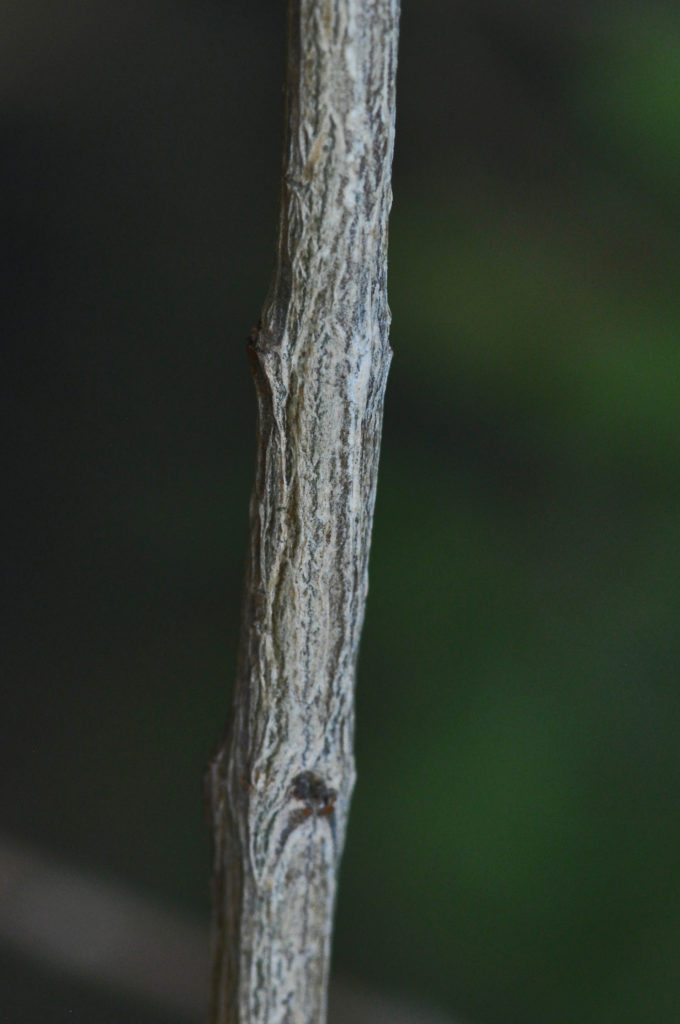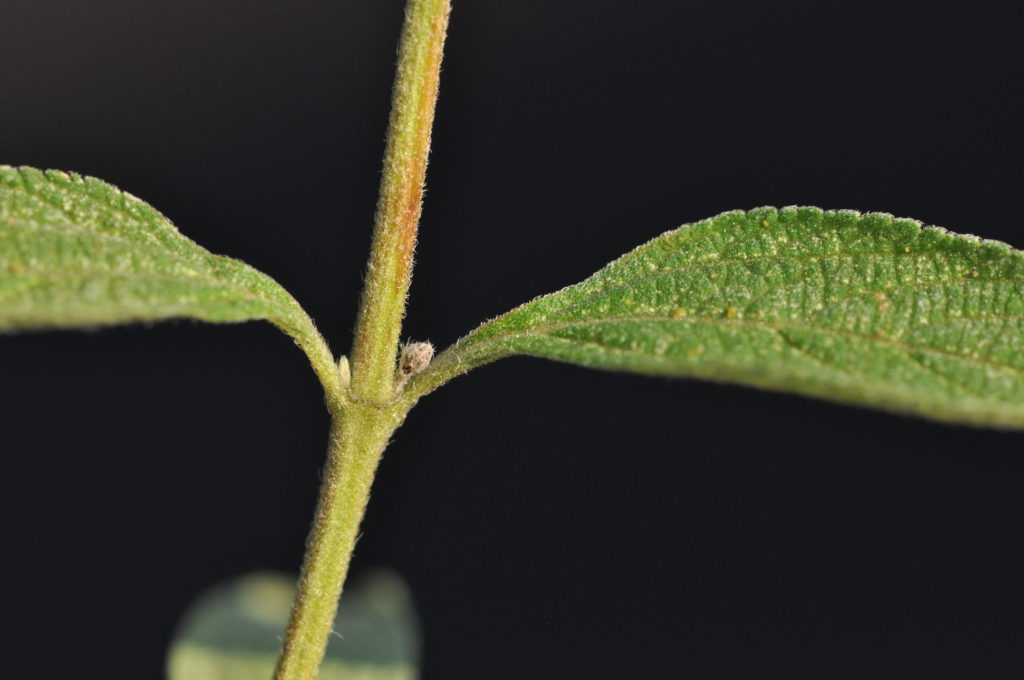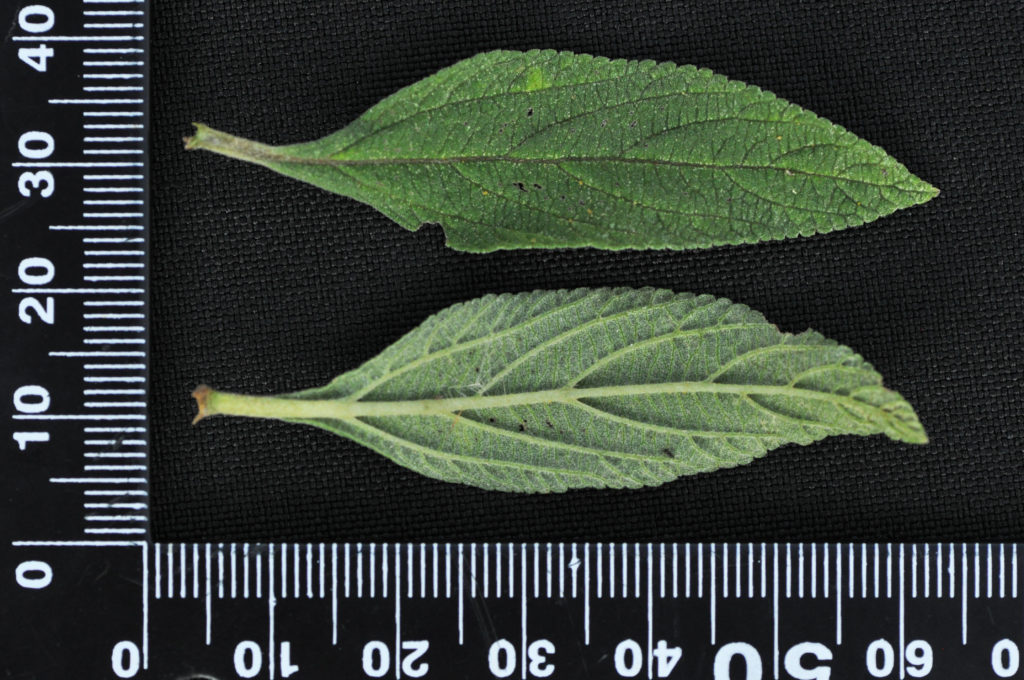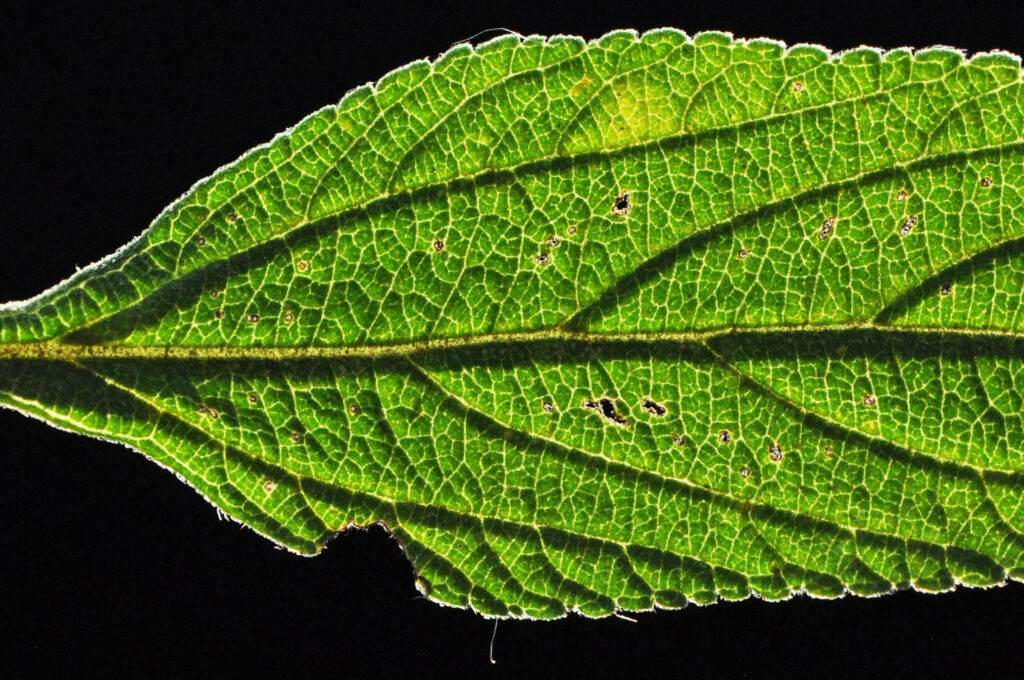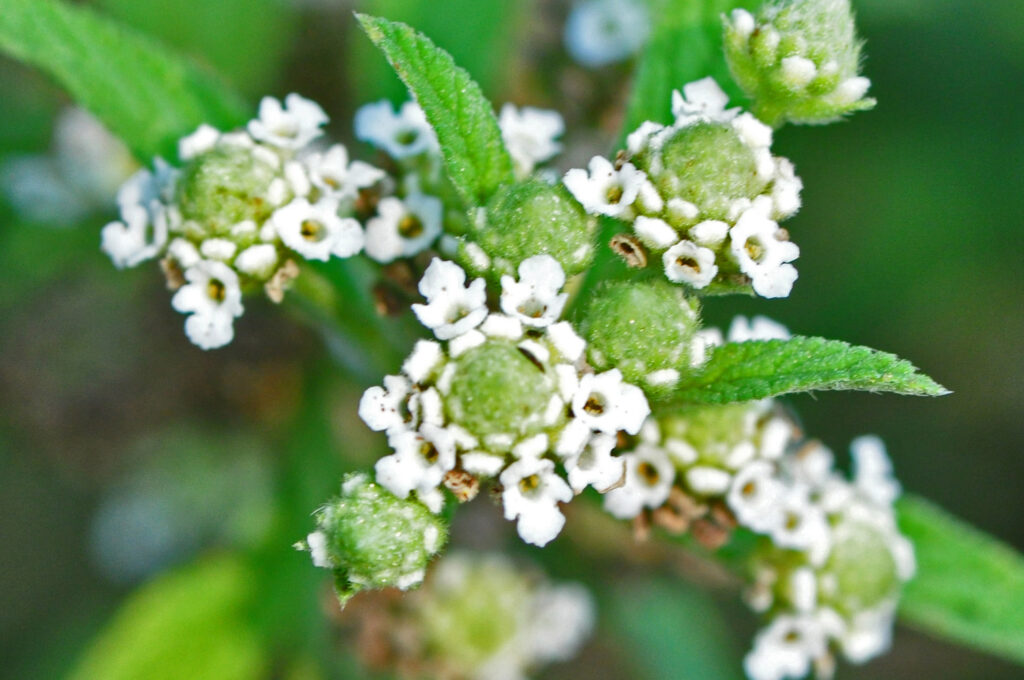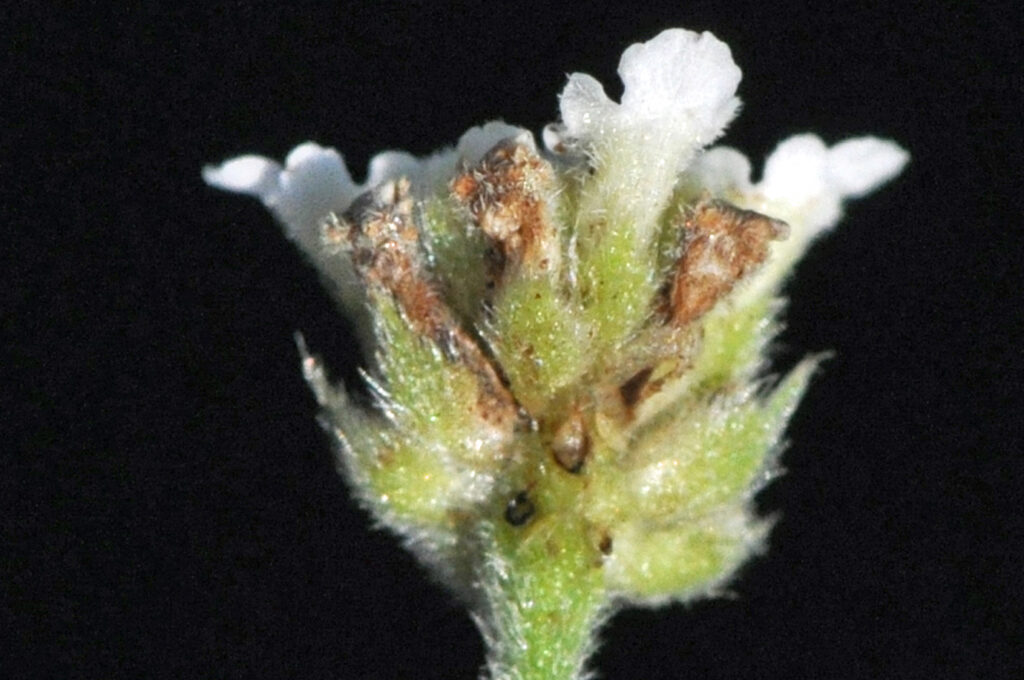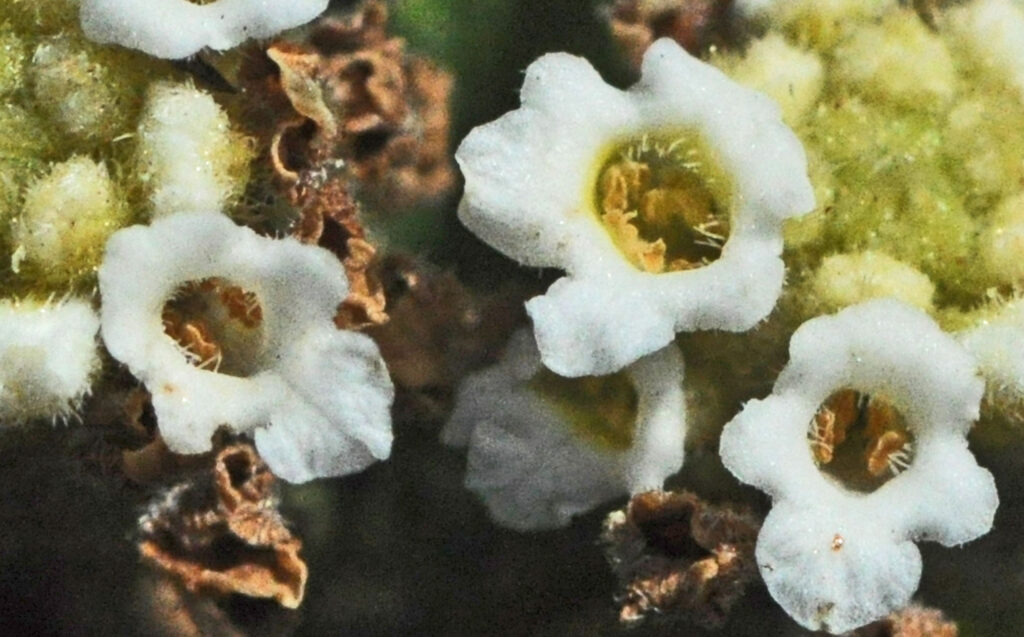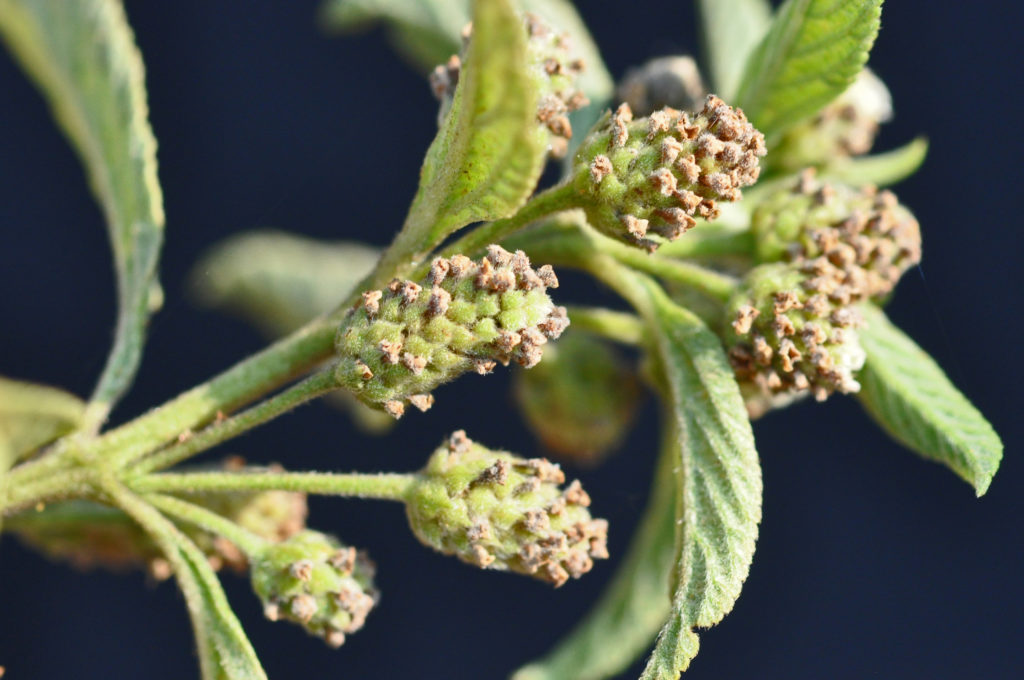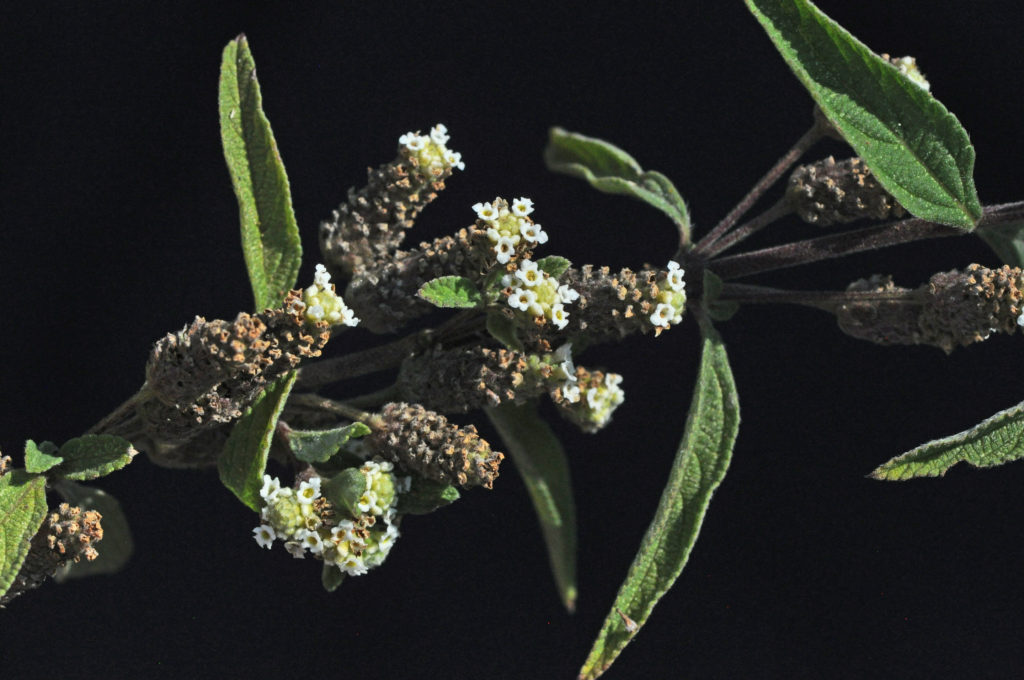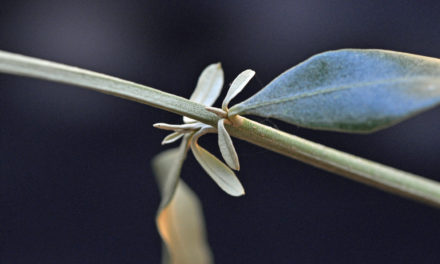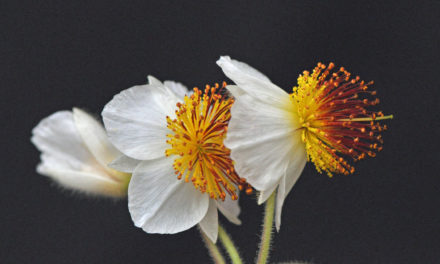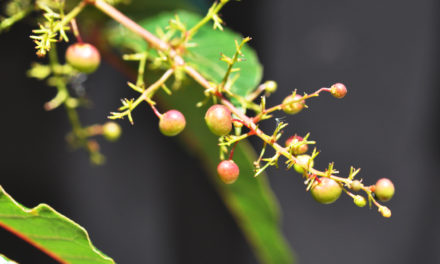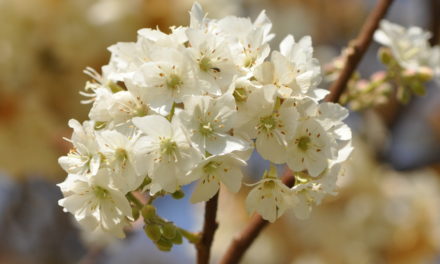General Info – summary
This Plant with longitudinally furrowed bark and angular branches is usually a shrub that may reach 4,5m high. The elliptic, simple, densely toothed Leaves lack stipules. The base is decurrent. Small white Flowers are in panicles and have didynamous stamens & 2-locular superior ovaries. The Fruit is a small nutlet containing a seed lacking endosperm. The perfume industry makes use of extracted volatile oils.
Description
Lippia javanica
Previous Names: Lantana galpiniana, Lippia asperifolia, Verbena javanica.
Common names: (Afr) Beukesbos, Beukesbossie, Koorsbossie, Koorsteebossie, Lemoenbossie, Maagbossie. (Eng) Fever Tea, Fever Tree, Lemon Bush, Wild Sage, Wild Tea. (isiNdebele) Umsuzwana.(isiXhosa) Inzinziniba. (isiZulu) Umsuzwane, Umswazi. (Northern Sotho) Usuzwane, Umsuzwana. (siSwati) Umsutane, Mutswane. (Tw) Bokhukhwane. (Tshivenda) Musudzungwane.
Family: Verbenaceae (Verbena family – mainly tropical and many are aromatic). Here members may be herbs, shrubs or small trees. The simple Leaves lack stipules and margin may be entire or serrate. They are usually opposite or whorled. The bisexual Flowers may be 2-lipped. The persistent Calyx is usually 4-5 lobed and is somewhat accrescent (continuing to grow after flowering). The tubed Corolla is 4-5 lobed. There are usually 4 didynamous (having 4 stamens disposed in 2 pairs of 2 different lengths) stamens. This characteristic is also common in Scrophulariaceae, Labiatae and Stilbaceae e.g., Bowkeria citrina). The stamens arise from near the middle of the corolla tube. Anthers have 2 parallel or divergent thecae (pollen sacs) with longitudinal slits. The superior Ovary usually has 4 chambers each with a single ovule. The style arises from the top of the ovary. Fruit is a drupe (a fleshy, 1-seeded indehiscent fruit with the seed enclosed in a stony endocarp; stone fruit e.g., peach) or a berry (pulpy, indehiscent fruit like a grape or tomato). 2-4 nutlets or pyrenes are produced. The family has up to 36 genera and in excess of 1 000 species. In southern Africa, there are 8 genera and about 40 species.
Name derivation: Lippia – Named after Augustin Lippi (1678-1705). He was a French doctor, explorer and botanist. javanica – from Java: but this is not correct. There are about 200 species in Africa and America and 6 in southern Africa.
Conservation Status: National Status: L C (Least Concern). Assessment: 2017 (L. von Staden).
Tree/shrub
This plant may be single but is usually multi stemmed. The Tree may reach 4,5m high but is usually a shrub up to 3m high and may start branching at ground level. Bark becomes somewhat longitudinally furrowed (photo 61). The many Branches are angular, roughly striated and twigs are roughly hairy (photo 69 – under Leaves).
- 59. 2018/03/14. Pretoria NBG. Photo: David Becking.
- 61. 2018/03/14. Pretoria NBG. Photo: David Becking.
- 81. 2018/03/14. Pretoria NBG. Photo: David Becking.
Leaves
The elliptic Leaves are simple (have a single blade which may have incisions that are not deep enough to divide the leaf into leaflets). Leaves are usually opposite (photo 69) or, occasionally, in whorls of 3 or 4. The rough, slightly leathery Blade is hairy on both sides and up to 13 x 5cm (usually smaller). Leaves have a densely toothed Margin (photo 73). The distinctive Veins are indented above and clearly protruding below (photo 72). Vein details are best seen when the leaf is examined against a strong light (photo 73). Both sides of the leaf are soft, hairy and light green – slightly lighter below. Individual leaves are up to 6 x 2cm. The Base is initially rounded and becomes cuenate (narrowly triangular with an acute angle towards the base) and is decurrent (leaf blades that partly wrap or have wings around the stem or petiole – photo 72). The Apex is obtuse to acute (photo 73). Crushed leaves have a pungent but pleasant lemon-like smell. Petiole (leaf stalk) is grooved above (photo 72) and up to 1cm long. Small glands are present. Leaves lack Stipules (basal appendage of the petiole).
- 69. 2018/03/14. Pretoria NBG. Photo: David Becking.
- 72. 2018/03/14. Pretoria NBG. Photo: David Becking.
- 73. 2018/03/14. Pretoria NBG. Photo: David Becking.
Flowers
A bract supports each small, sessile, white to cream Flower (up to 5mm wide) that is zygomorphic (irregular flower with the corolla divisible into 2 equal halves in one plane only). They occur in oblong or globose Spikes (simple indeterminate inflorescence with sessile flowers and mature into more of a cylinder shape (photo 84 under Fruit) up to 22 x 8 mm. The base of each spike is usually supported by a single unbranched Peduncle (stalk of the flower cluster – photo 84 under Fruit). Up to 5 spikes arise from each leaf axil (photo 84). The densely hairy Calyx (photo 77) usually has 2 slightly enlarged lobes that are accrescent (continuing to grow after flowering). The Corolla with a narrowly funnel shaped tube is glandular above and whitish to cream coloured (photo 62). The white, yellowish or greenish Petals are slightly bilabiate (2-lipped – photo 661). The Stamens are didynamous (having 4 stamens disposed in 2 pairs of 2 different lengths). They arise from the middle of the corolla tube and alternate with the corolla lobes (one of which is larger). Stamens do not emerge from the corolla mouth (photo 661). The Filaments may be shorter than the Anthers. The anthers have 2 thecae (pollen sacs). The 2-locular superior Ovary has a thickened Stigma. Each locule contains a single Ovule. The plant may flower throughout the year but especially from summer to early autumn.
- 62. 2018/03/14. Pretoria NBG. Photo: David Becking.
- 77. 2018/03/14. Pretoria NBG. Photo: David Becking.
- 661. 2018/05/29. Pretoria NBG. Photo: David Becking.
Fruit
Fruit is an inconspicuous, small dry Nutlet (an indehiscent, 1-seeded hard bony fruit).
- 84. 2018.03.14. Pretoria NBG. Photo: David Becking.
- 59. 2018/05/29. Pretoria NBG. Photo: David Becking.
Distribution & Ecology
This is a very hardy plant, that is common in disturbed areas. It may occur in grassland, scrub and open forests, stream banks, woodland, open bushveld (a sub-tropical woodland ecoregion of southern Africa) and forest fringes. It is absent from the Western and Northern Cape. It occurs from the Eastern Cape, Kwa-Zulu Natal, Free State, Gauteng, Mpumalanga and Limpopo. Beyond South Africa, it is found in Botswana, Swaziland, Mozambique, Zimbabwe, Malawi, Tanzania, Kenya and Ethiopia. Possibly, because of the contents of the aromatic leaves the plant is seldom browsed. Many species of butterfly are attracted to the nectar. This plant is often found with other species including Brachystegia and Combretum.
Ethnobotany
The plant contains volatile Oils that include caryophyllene, p-cymene, ipsdienone, myrcene and linalool. These chemicals are the reason for the plant being commercially grown. The perfume industry makes use of these oils. Much use of this plant occurs in traditional herbal preparations. Crushed Leaves can be used as an insect repellent. It can be included when making candles. The plant is easily propagated from seeds and cuttings.
References
Boon, R. 2010. Pooley’s Trees of eastern South Africa. Flora and Fauna Publications Trust, Durban.
Burrows, J.E., Burrows, S.M., Lotter, M.C. & Schmidt, E. 2018. Trees and Shrubs Mozambique. Publishing Print Matters (Pty) Ltd. Noordhoek, Cape Town.
Coates Palgrave, M. 2002. Keith Coates Palgrave Trees of Southern Africa, edn 3. Struik, Cape Town.
Schmidt, S. Lotter, M. & McCleland, W. 2002. Trees and Shrubs of Mpumalanga and the Kruger National Park. Jacana, Johannesburg.
von Staden, L. 2017. Lippia javanica (Burm.f.) Spreng. National Assessment: Red List of South African Plants version 2020.1. Accessed on 2023/08/21.
https://www.wikidata.org/wiki/Q27158228
https://en.wikipedia.org/wiki/Myrcene
http://pza.sanbi.org/lippia-javanica
http://southafrica.co.za/lippia-javanica.html
https://www.operationwildflower.org.za/index.php/plant-records/shrubs/80-lippia-javanica
ID Thanks to SANBI (Pretoria)
KEW

